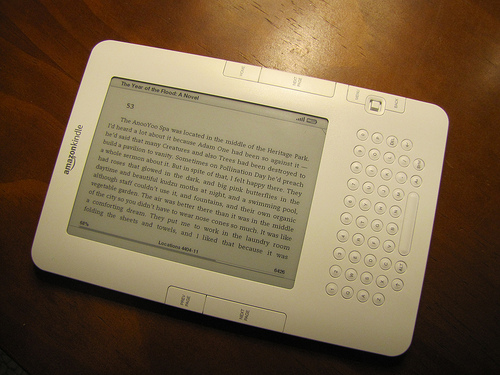Why Schools Should Switch To Kindle E-Readers
 In October of 2009 USA today released an article discussing Cushing Academy in Massachusetts and the school library’s decision to rely upon the Amazon.com Kindle e-reader for almost all of their book circulation needs. While this is the first major coverage of an almost full conversion to digital readers for a school library, more and more school libraries have begun to utilize Kindle devices in some capacity.
In October of 2009 USA today released an article discussing Cushing Academy in Massachusetts and the school library’s decision to rely upon the Amazon.com Kindle e-reader for almost all of their book circulation needs. While this is the first major coverage of an almost full conversion to digital readers for a school library, more and more school libraries have begun to utilize Kindle devices in some capacity.
In many cases, one of the primary complaints of parents, teachers, and librarians not in favor of the Kindle being implemented in school libraries is that it is a somewhat expensive device with an average price tag of approximately $260-$470 depending on the model purchased. While this may seem like an inordinately huge price tag for an educational library to pay for a new piece of equipment, it is important to consider other variables.
One new hardcover book, in particular a non-fiction title, is usually going to cost a school library $20-$30 if a standard hardcover is purchased. Should a library edition of available titles be purchased, the cost increases. Almost all new books and bestsellers cost only $9.99 on the kindle, which equates to a $10 to $20 savings per book. A school library that purchases 20 books in a month will instantly pocket the cost of a Kindle unit in savings and will only have to purchase the book once to have it instantly available in the library’s kindle account.
An added bonus that comes with switching over to a Kindle based library is that it does not have to be limited purely to the number of handheld devices owned by the school or school system. Kindle now has a reader for PCs and a Kindle reader application for iPhones and the iPod Touch. Each of these applications allows a Kindle owner the ability to read a book in their Kindle account when they do not have access to their Kindle unit.
Any notes or highlighted sections will automatically synchronize and be visible on the PC and/or iPhone screen. This option could be particularly useful in literature classes where book selections are read both independently and in the classroom. A student who takes notes on a school library provided Kindle device during class can access those same notes at home on their PC in preparation for a test. Future upgrades to the Kindle and iPhone readers aim to allow the addition of notes to the PC and iPhone books as well.
As Kindle technology continues to develop, it will surely offer many more features targeted towards school and public libraries. Whether it is a full or partial implementation, e-readers should have a place in any technologically advanced educational system and the individual school libraries within them.
Image by http://www.flickr.com/photos/jcwestbrook/ / CC BY-ND 2.0